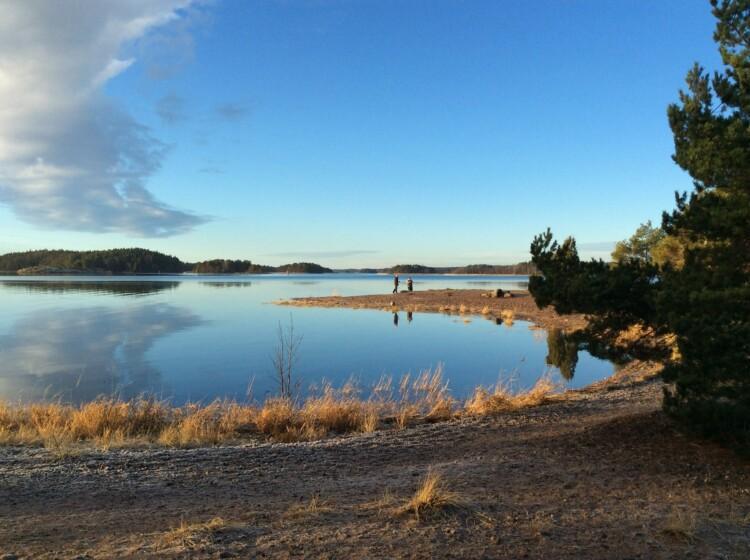Finland's Coastal Strategy identifies joint actions to tackle coastal challenges
Finland’s Coastal Strategy is now complete. The Strategy aims to promote sustainable use of the coast and address threats such as biodiversity loss, climate change, and pollution. Developed in extensive collaboration with stakeholders, the coastal strategy outlines principles and models of operation that ensure sustainable coastal use and promote the achievement of good environmental status in the marine environment. Implementation will be carried out in conjunction with the Maritime Spatial Plan 2030 for Finland.
The Coastal Strategy is based on the EU’s recommendation for integrated coastal zone management, the maritime spatial planning directive, and the maritime spatial plan. Finland’s Maritime Spatial Plan 2030 examines the land-sea interactions and includes sector-specific visions and roadmaps to promote sustainable coastal use. The Coastal Strategy takes into account these and other relevant programs and strategies, such as the UN and EU sustainable development goals, national land use goals, and national maritime energy and food production strategies.
”The coastal strategy was first developed in 2006, and now it was time to update the strategy so that it aligns with the Maritime Spatial Plan. The Strategy is based on a systemic approach, viewing the coast as a socio-ecological system resulting from the interaction between humans and nature. Social factors cannot be understood and managed without considering ecological factors, and vice versa,” notes Senior Adviser Tiina Tihlman from the Ministry of the Environment.

A Shared Vision for Coastal Use
The coastal strategy was developed in extensive collaboration with stakeholders. During the coastal strategy work, measures were proposed through an expert survey, expert interviews, workshops, and the coastal regions’ MSP Coordination Group work. The Ministry of the Environment received over 70 statements on the draft strategy, whose perspectives were broadly considered in the finalization of the strategy.
The strategy aims for the year 2050. The work has identified ten key measures that focus on the nearer future, specifically the year 2030. The measures address, for example, the thriving coastal environment and communities, the sufficiency of energy and food, the sustainability of land use and construction, the improvement of accessibility, preparedness for exceptional situations, and the management of up-to-date situation picture.
”The Key Measures are divided into smaller measures, of which as many as 191 were identified. Addressing the challenges of coastal use requires broad-scale activation of people. The Action Cards help in understanding the whole and the significance of one’s actions. Now it’s time to get inspired and get to work,” encourages Tihlman.
Implementing the Coastal Strategy hand in hand with the Maritime Spatial Plan
The implementation of the strategy is already underway. The Regional Council of Kymenlaakso, together with the Maritime Spatial Planning Cooperation Coordination, has examined the manifestation and continuity of the blue-green connection at the land-sea interaction interface and its consideration in regional land use planning. Broad stakeholder collaboration has been strengthened through cooperation with landscape architecture students from Aalto University.
The coastal regional councils and the coordination of maritime spatial planning cooperation are also promoting the reconciliation of offshore wind power and the needs of fisheries and fish stocks in the Bothnian Sea, as well as the future of sustainable energy supply in Southwest Finland.
”The coastal strategy work has been significant for maritime spatial planning, and vice versa. We are currently promoting, with funding from the Interreg Baltic Sea2Land project, the examination of a blue-green network covering the entire coastal and marine area, i.e., the examination of areas and connections. And we are considering how the theme can be incorporated into maritime spatial planning and the maritime spatial plan, which will be updated during 2024–2027,” says Mari Pohja-Mykrä, Coordinator of Maritime Spatial Planning Cooperation.
Ongoing measures demonstrate that the task field is diverse: from ensuring the future of migratory fish to the placement of solar power plants in catchment areas. What could be your area of expertise and interest? Familiarize yourself with Finland’s Coastal Strategy here. On the website, you will find downloadable materials, including a report and identified measures.
The common principles and network of actors in the coastal strategy will be reviewed approximately every five years in response to changes in the operational environment. The coastal strategy is a dynamic strategy that must reflect the systemic operational environment and its changes. Monitoring the implementation of the Coastal Strategy is intended to be linked to the six-yearly update of the Maritime Spatial Plan.




